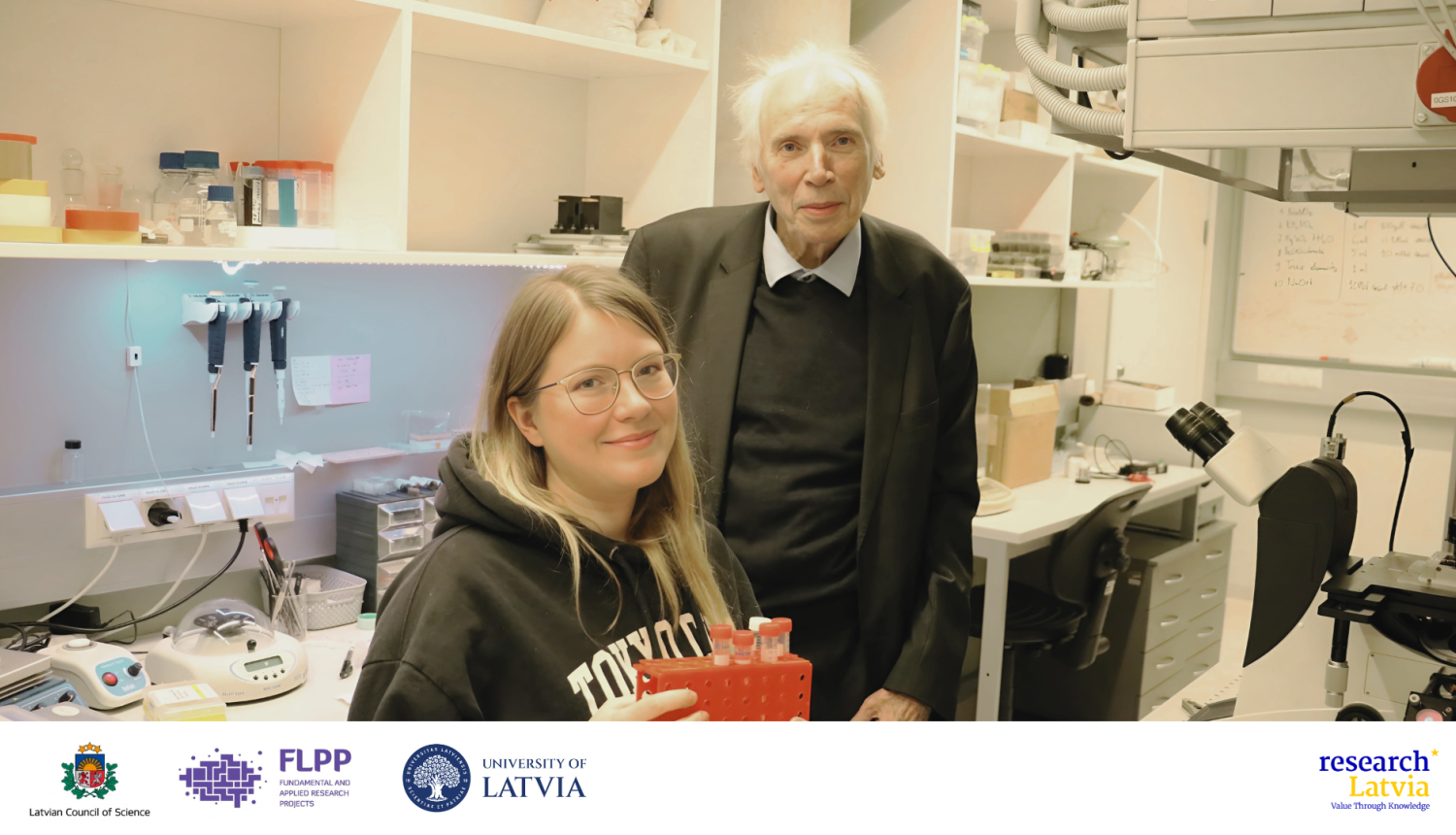Many of us fondly recall playing with magnets as children, testing various household objects to see if they were attracted to them. But what if we used magnets to study other magnetic substances and even magnetic bacteria?
This is precisely what scientists at the University of Latvia investigated as part of the project " Biologically inspired models of active matter driven by electromagnetic field (BIMs)," funded by the Latvian Science Council's Fundamental and Applied Research Program. The researchers explored how various substances and organisms respond to magnetic fields. Using previously studied and published calculations to explain how materials and organisms react, they validated and expanded upon these theories through experiments.
Key Discovery: Swarming and Movement of Bacteria in Magnetic Fields
One of their most significant findings was understanding how bacteria form swarms and move under the influence of a magnetic field. Swarming is a phenomenon observed in nature among birds, fish, bees, and other animals. But how do living organisms react to magnetic fields? Many of us recall blocking metal objects from being attracted to magnets with just our fingers.
During their research, scientists discovered that bacteria found in river water—which are harmless to human health—contain small fragments of magnetic material. These fragments dictate the movement and direction of bacteria within a magnetic field, behaving like a compass needle.
Magnetic fields become visible through their effects on surrounding objects. Two magnets attract each other because they react to the field created by the other. The researchers found that various substances and organisms respond to magnetic fields. Their task was to document these movements, identify patterns, and ensure that the movements were consistently repeatable under specific magnet placements.
Using mathematical models and experiments, the scientists investigated how magnetic fields affect the behavior of various systems, such as magnetic fluids. Initially, the fluids revealed repetitive movements in magnetic fields. Magnetic forces caused droplets of these fluids to form various shapes, including intricate labyrinths. Creating these patterns involved complex mathematical calculations, the algorithms for which were also a project objective.
Why Move Magnetic Particles?
While it's well-known that magnets attract certain particles, the research aimed to understand how to control particle movement using magnets. Past science-fiction concepts, such as implanting microchips into the human body, inspired this exploration.
Understanding the movement patterns of magnetic bacteria could allow us to control the position of substances within the human body. Latvian researchers explained how magnetic fields could similarly manipulate microscopic objects, such as bacteria or magnetic particles.
They developed and experimentally tested models of active systems responding to electromagnetic fields. These systems included magnetic particles, flexible ferromagnetic filaments (long, elastic structures containing tiny magnetic particles), and magnetotactic bacteria. Using mathematical models, the scientists described the behavior of these systems and predicted their responses to external factors, particularly magnetic fields.
They experimented with the duration and motion of magnets using specialized microscopes. The test objects formed specific shapes and stretched depending on the magnet's placement, with repeated patterns observed in their movements. To systematize these observations, the researchers created universal physical models that could explain and quantitatively describe the phenomena.
The Research Process
The research predominantly took place in the laboratory, where scientists recorded the motion of these objects. A significant portion of the work involved adjusting variables to replicate precise movements predicted by the project's models. This was far from a one-person effort. A multidisciplinary team, which had already been studying magnetic substances, was joined by biologists for this project, thanks to the discovery of magnetic bacteria.
The story of obtaining these bacteria highlights the diversity of research work. To determine whether magnetic bacteria exist in Latvia, scientists embarked on an expedition to the Ogre River. Samples taken from the riverbed revealed bacteria containing microscopic chains of magnetic particles. These bacteria thrive in dark, low-oxygen environments, such as riverbed sand. After extracting water samples, the bacteria were coaxed out of the sand using magnets, then observed under a microscope to study their movement.
As a result, the research team developed new models to draw quantitative conclusions about the behavior of active systems.
Applications of Magnetic Movement Research
Latvian researchers have been studying the movement of magnetic fluids in magnetic fields since the 1980s. However, consistent experiments have led to groundbreaking discoveries about biologically inspired active systems. Revisiting initial formulas often reveals new solutions, properties, and trajectories of movement.
This research process is also marked by serendipity. Magnetic system movements uncovered during the experiments require validation and must demonstrate consistent behavior under varying conditions. These findings often lead to unexplored solutions that uncover physical phenomena with significant implications for our future.
The experimentally observed system properties are documented in models and scientific papers, allowing for their application in other fields. The research then continues to address other scientific questions.
What Can Physics Formulas Change?
Although the path to final results may seem lengthy, researchers predict their work could drive medical advancements. One pressing issue is the side effects of medications on the liver. Most drugs are administered as pills or injections, which do not ensure precise delivery to the target organ. Moreover, the impact on the liver is often harmful.
Scientists are exploring ways to use the discovered properties of magnetic bacteria to attach medications to them—or to similarly engineered organisms. Since these bacteria are harmless to human health, future experiments might test their ability to transport medications to specific locations in the human body. This research will require collaboration from experts across multiple disciplines.
Such bacteria don't need additional energy or batteries to operate. Their movement in a magnetic field acts as an energy engine, powered solely by the field itself.
New Horizons
This study opens up new opportunities and challenges that could transform our understanding of technology and its applications. The journey of discovery is full of unknowns, but this makes it both exciting and meaningful. Each step forward lays the foundation for breakthroughs that can improve our quality of life and address global challenges, such as advancing healthcare and environmental protection.
Latvian scientists actively study magnetic bacterial movement, while others research ways to minimize the physical size of drugs without compromising their therapeutic properties. Together, this work might lead to innovations like delivering medications to specific parts of the human body using natural phenomena.
By understanding how magnetic fields manipulate and control biological processes, we can envision a future where this force drives innovative therapies, advanced materials, and revolutionary technologies. The journey of discovery has only just begun, and the potential impact of this research is boundless.
The project " Biologically inspired models of active matter driven by electromagnetic field (BIMs)" (lzp-2020/1-0149) is implemented under the Fundamental and Applied Research program, funded by the Latvian Science Council.





